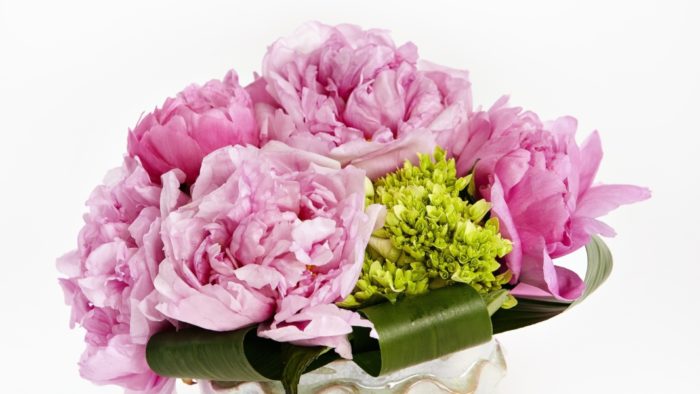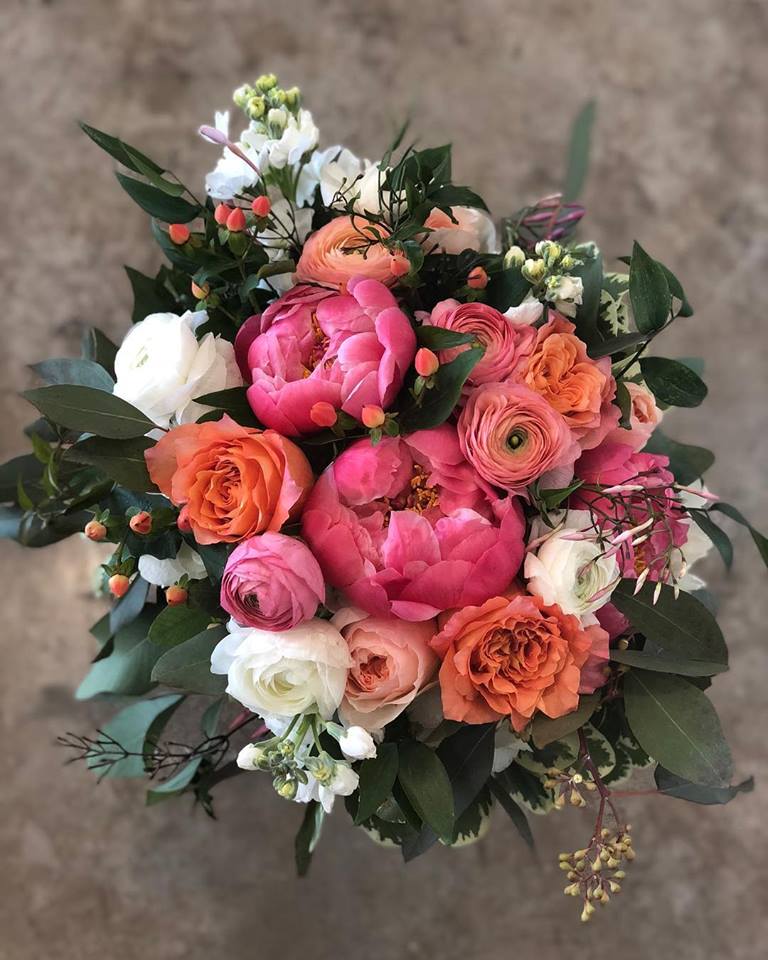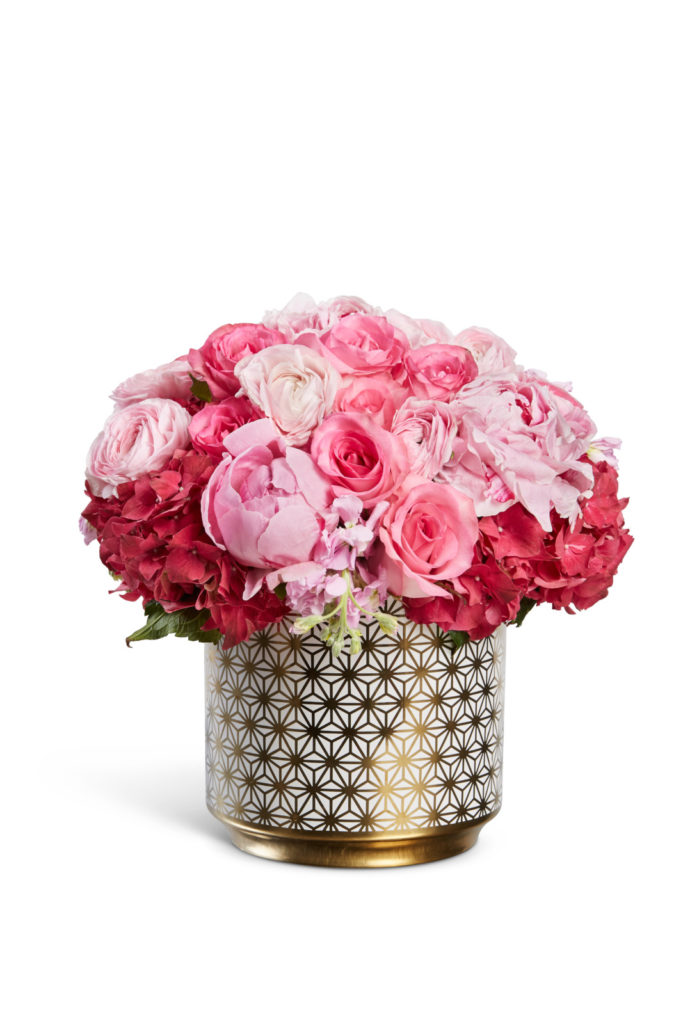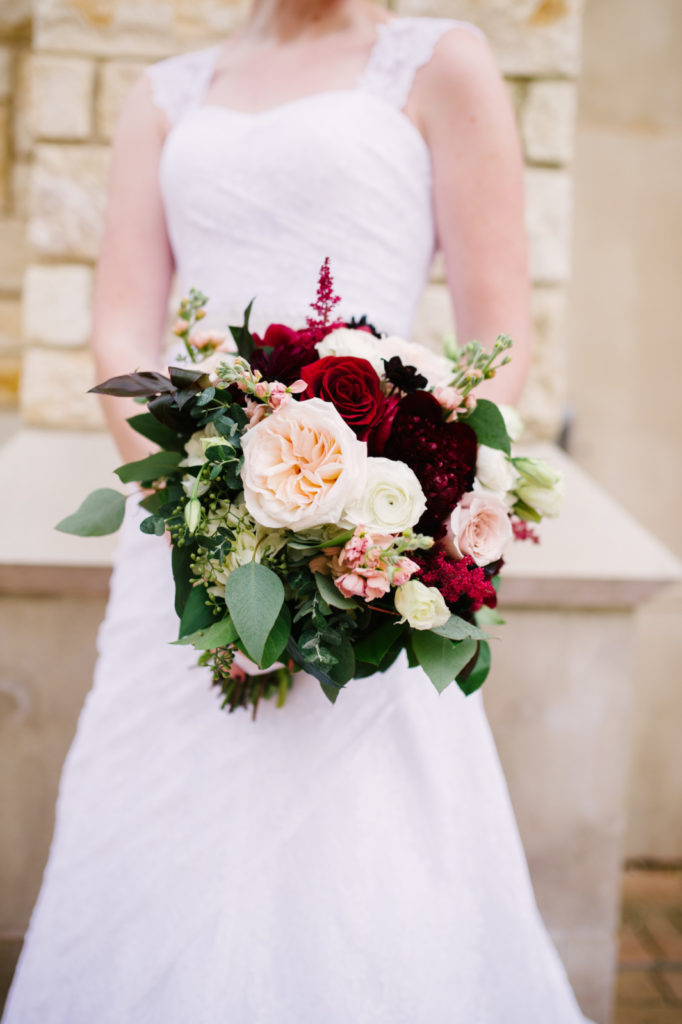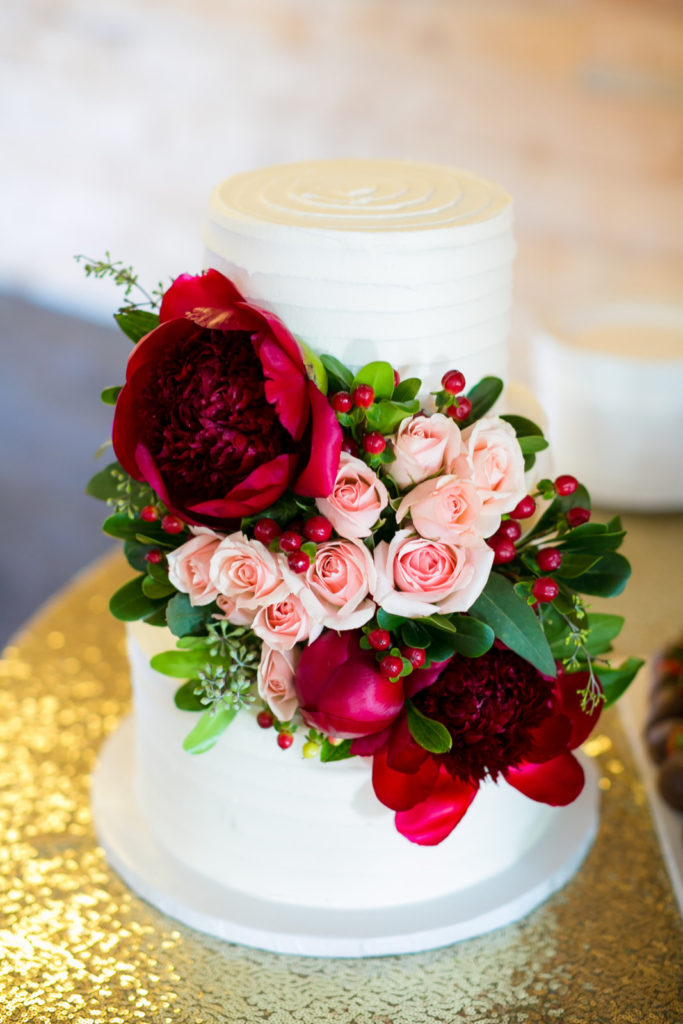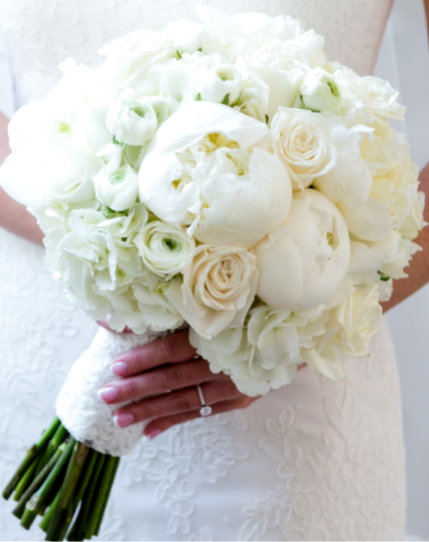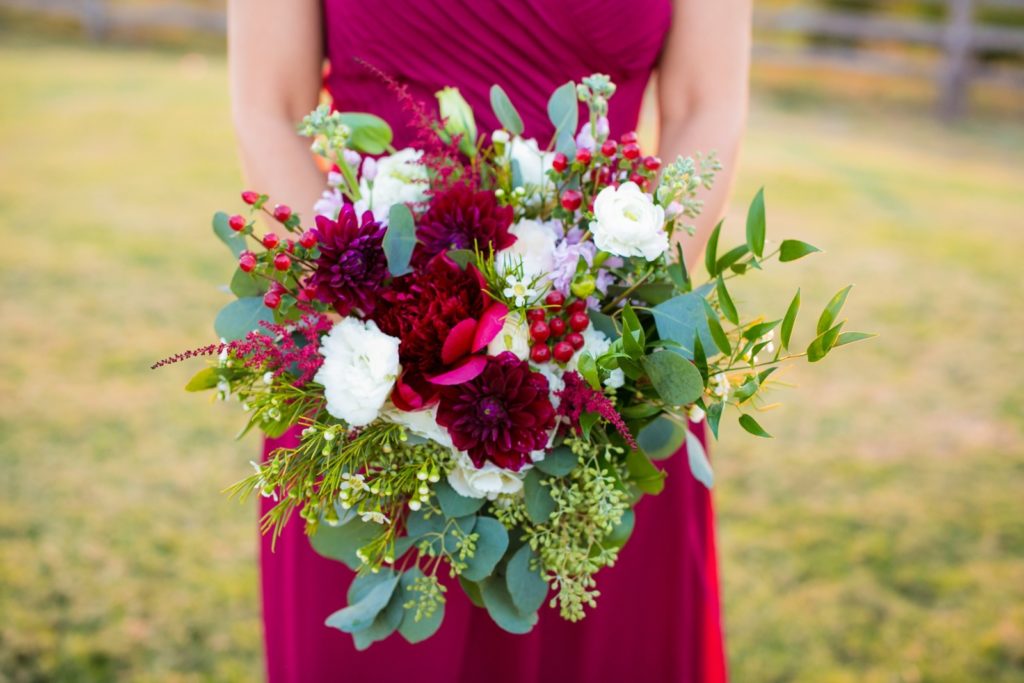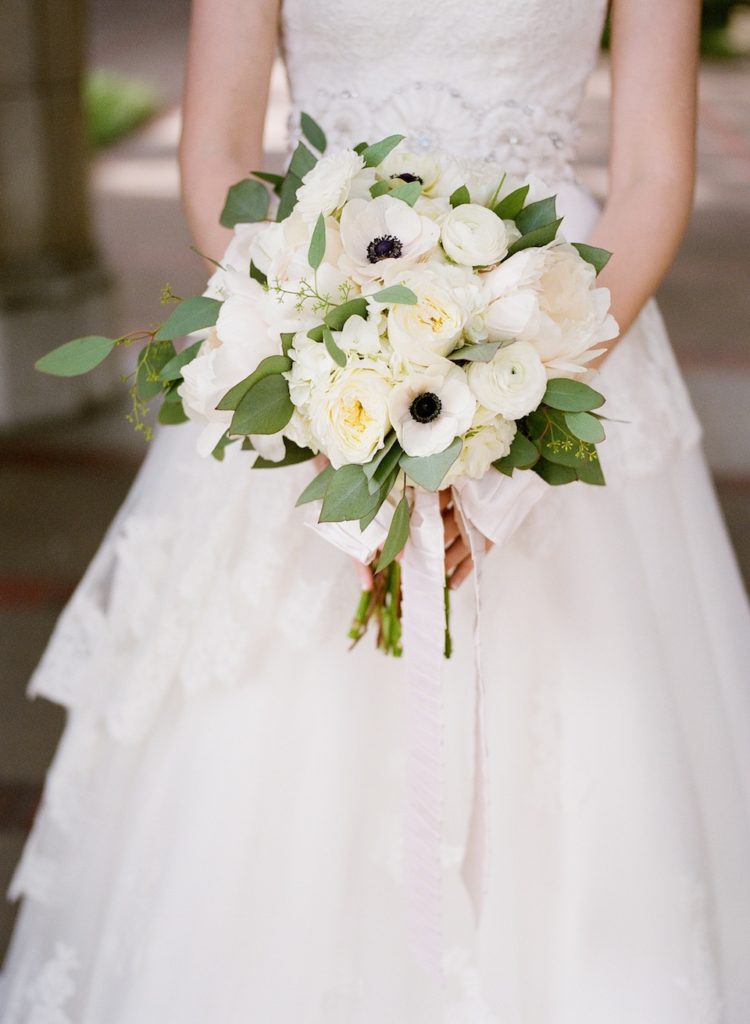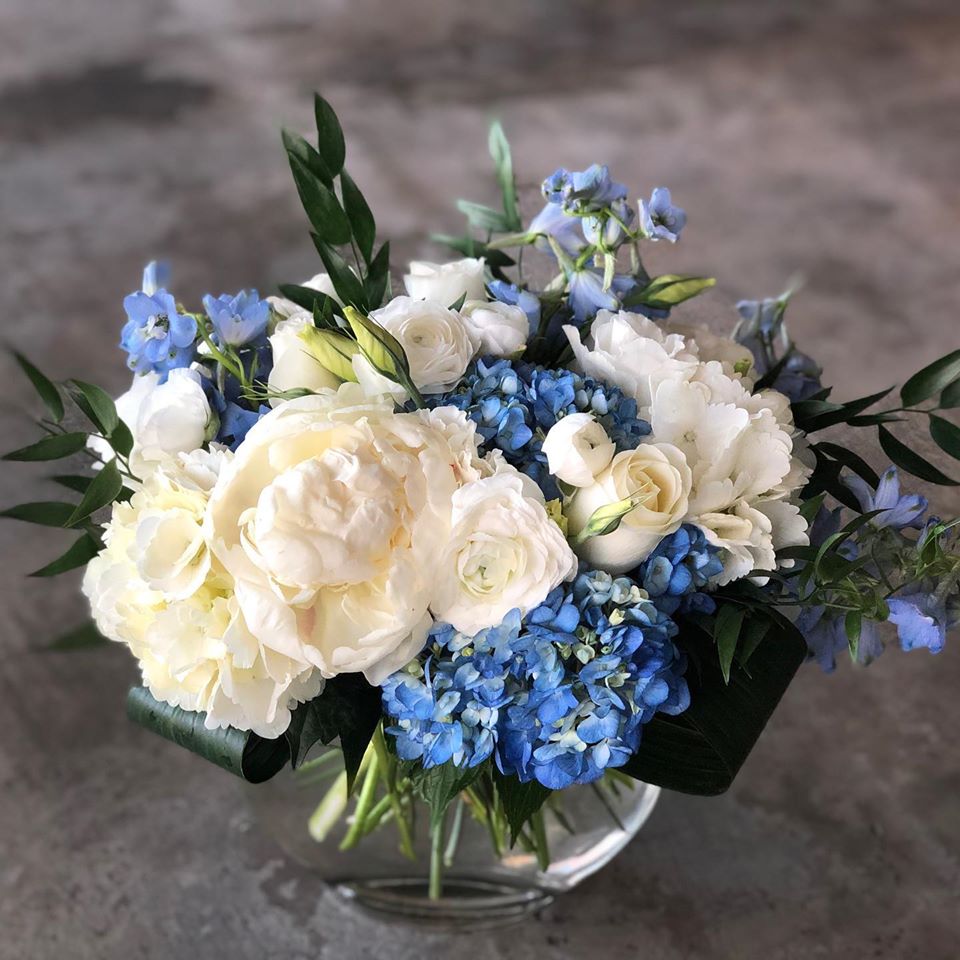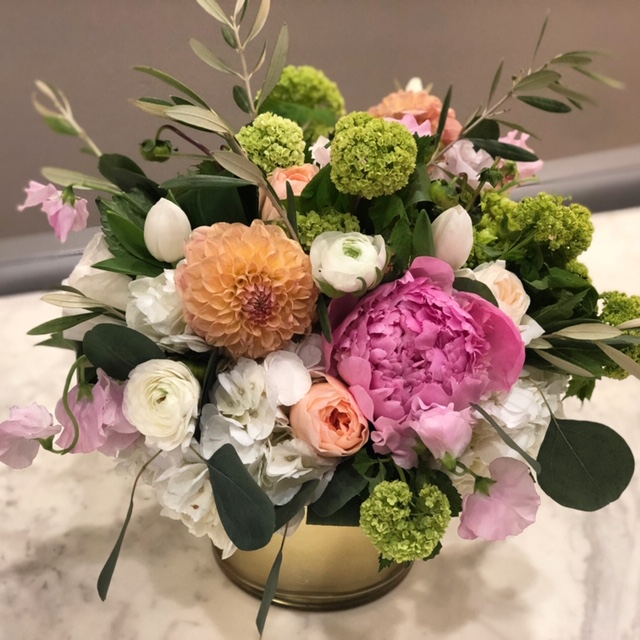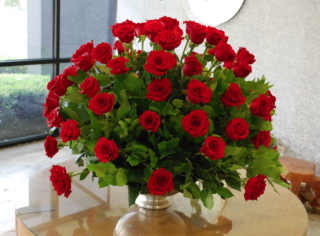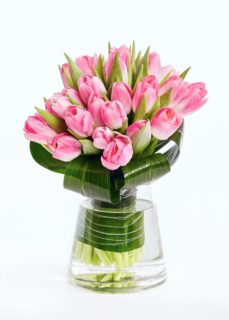“Do you have peonies?” That is one of the most commonly asked questions we get from our customers throughout the year. In fact, peonies rival roses for our most requested flower. They are like the most popular girl in school, the one everybody wants to hang around with. And, like many popular girls, peonies play hard to get. They are only in season from late spring to early summer. Maybe part of their popularity can be attributed to their somewhat elusive nature, but I think most would say it is because they are, simply, stunning.
Peonies love to show off. Their blooms can reach 10 inches in width, with showy ruffled, densely packed petals. Their colors range from white and the palest pink to vibrant coral and deep burgundy. They are perfectly perfect on their own, but they are equally beautiful when showcased in an arrangement with other blooms.
symbolism
Peonies’ roots trace back hundreds of years to Asia, where they were cultivated for their healing properties more than their appearance. It was believed that parts of the peony plant relieved arthritis, headaches, and muscle cramps. To this day, peonies play an important role in Chinese culture (where the word is translated “most beautiful”). The flower is closely associated with royalty, and is a symbol of wealth and prosperity. Deep red hues are favored in Eastern cultures as a symbol of honor and respect. A favorite motif used by Chinese artisans, decorative objects featuring peonies are often found in Chinese homes to bring good fortune to its occupants.
beloved by brides
In the U.S., peonies more often symbolize love and romance. Pink blooms are favored in this context, but today’s brides choose from a variety of shades for their bouquets, ceremony and reception florals. Desirable for both their beauty and symbolism, peonies are believed to be a good omen for a happy marriage. That optimism should sustain the couple for at least a decade, as the peony is known as the 12th anniversary flower.
sourcing and availability
Now back to that “play hard to get” statement. While you might be successful in planting and cultivating peony plants in your home garden, commercially grown peonies are limited in both quantity and season. During peony season, which I mentioned is late spring to early summer, Lilium sources their blooms from Holland and Chile. We receive shipments of fresh blooms every week throughout the growing season. For weddings and special events, we can special order peonies in specified shades. We will also manage the stems so that their blooms open at the perfect time.
It’s the most wonderful time of the year! OK, maybe second most. At Lilium, we love peonies, and the opportunity to showcase them in creative and beautiful ways. It is pretty convenient that Mother’s Day falls in the middle of peony season as well. Studies show that moms love peonies, too! Well, I made that part up, but all of the moms at Lilium think peonies are (to borrow a well-known phrase), “practically perfect in every way.”
Give us a call and let us share some of the season’s best blooms with you or someone you love.

